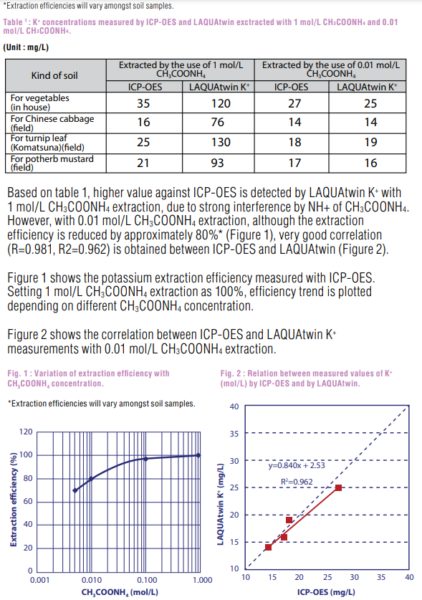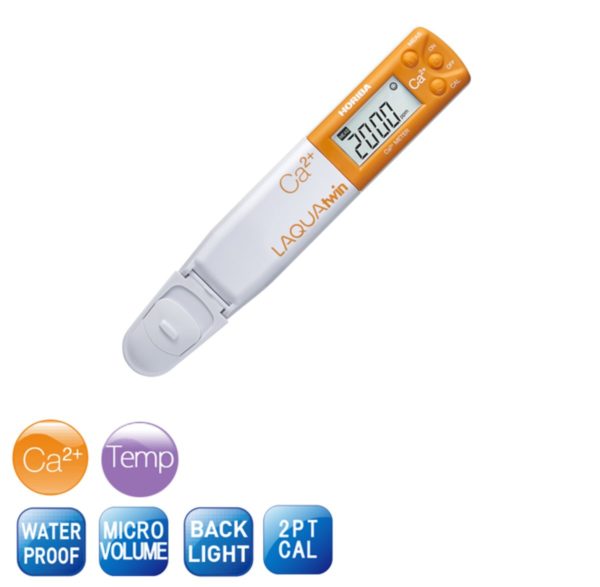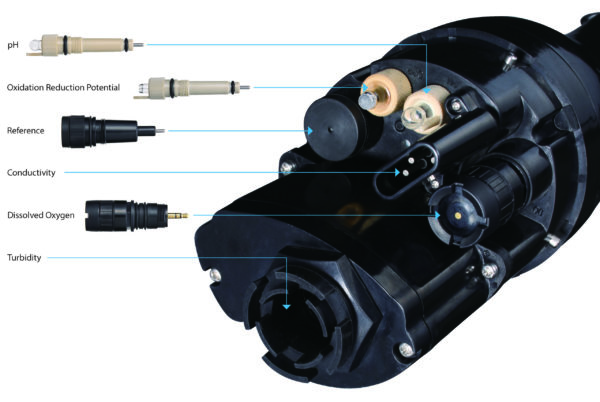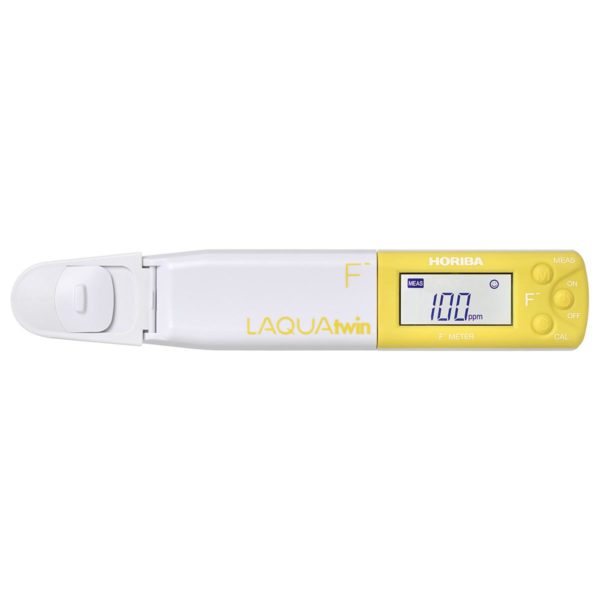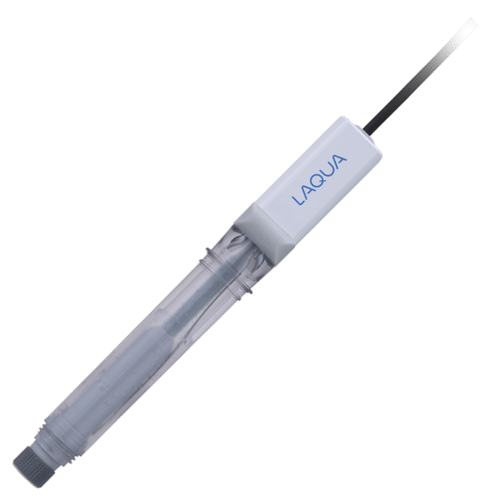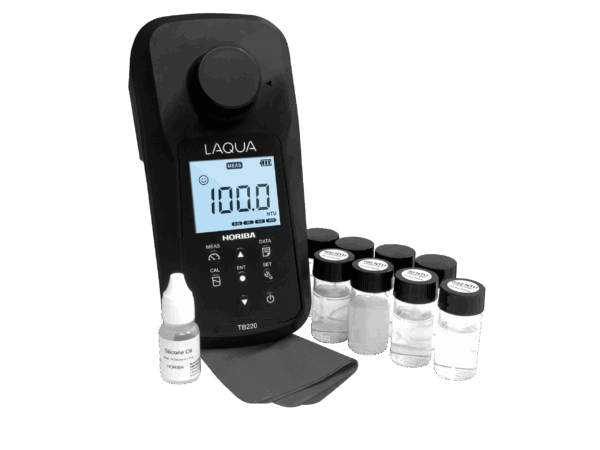LAQUAtwin is a series of compact water quality testers. Using Ion Specific Electrode (ISE) technology, they are available for Conductivity, Calcium ion, Nitrate ion, Potassium ion, Sodium ion and pH measurement. Using just a single drop of sample, the LAQUAtwin proprietary flat sensors can quickly and accurately measure the values of the chemical parameters for quality check of food in production lines.

Introduction
Typically, Atomic Absorption (AA) or Inductivity Coupled Plasma-Optical Emission Spectrometry (ICP-OES) is used to measure potassium ion, by first extracting the potassium ion from sample soils by 1 mol/L ammonium acetate (CH3COONH4). These are the methods performed in laboratories. A simpler method for rapid measurement of potassium ion in soil uses the LAQUAtwin potassium ion meter K-11 (B-731). The extraction method is the same as the lab method. The following procedure explains how you can measure K+ with good correlation to analytical lab tests.
Method
1. Put 1g each of air-dried soils (four samples) in 100mL glass beakers, two beakers per soil sample.
2. Prepare two kinds of extraction per soil sample, one by adding 20 ml of 1mol/L CH3COONH4 to one beaker, and 20ml of 0.01mol/L CH3COONH4 to another beaker.
3. Shake the beakers around 1 hour to extract K+ from the soil using a bench top shaker.
4. Calibrate LAQUAtwin K-11 (B-731) with 150mg/L and 2000mg/L K+ standard solutions included in the product.
5. Measure potassium ion concentration of the filtrated solution with calibrated K-11 (B-731) and with ICP-OES (e.g. HORIBA Jobin Yvon. Model ULTIMA2).
6. Perform this measurement with 4 different samples.
Results and Benefits
The Laqua Twin K-11 allows for a simple on site determination of potassium which provides accuracy close to laboratory techniques.
Table 1 shows the results from ICP-OES and LAQUAtwin K+ extracted with 1 mol/L and 0.01 mol/L CH3COONH4.
